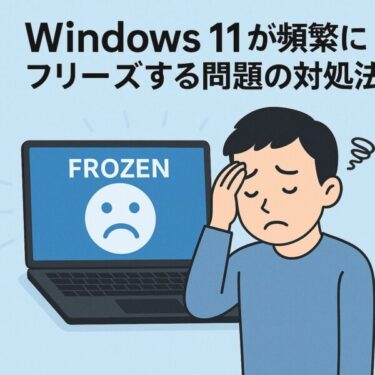Update (July 2025):
As of July 2025, issues with KB5054979 remain unresolved for many users on version 24H2. This update is primarily for .NET Framework 3.5/4.8.1 and may conflict with certain drivers or update cache files.
Windows 11 version 24H2 users are experiencing increasing issues when installing the KB5054979 cumulative update—facing installation failures, reboot loops, or system freezes. This guide walks you through easy-to-follow solutions, from basic fixes (SFC/DISM) to advanced tips and workarounds. Whether you’re new to troubleshooting or an experienced user, you’ll find clear, step-by-step instructions that anyone can follow.
1. Common Symptoms
Overview: These issues are usually caused by a mix of factors—corrupted files, stopped services, or environment-specific quirks.
Steps: Start with the basic repair tools.
Notes: Further steps follow if these don’t solve the issue.
2. Basic Fixes: SFC & DISM
2.1. SFC Scan
Overview: System File Checker repairs corrupted Windows files.
Steps:
Run Command Prompt as administrator.
Notes: Automatically repairs critical Windows system files.
2.2. DISM Scan
Overview: DISM resolves deeper system image issues that SFC cannot.
Steps:
- Before starting: Ensure internet access and ideally reboot once.
- 1 Run Command Prompt as admin.
- 2 Enter:
- 3 Wait 10–20 minutes for progress from 0% to 100%.
- 4 After success (“The operation completed successfully”), reboot and retry Windows Update.
Notes:
If you encounter the “DISM error: source files could not be found,” ensure you have an active internet connection, temporarily disable your antivirus software, and confirm your Windows version is up to date.
3. Advanced Troubleshooting (Very Important)
If the basic tools don’t work, follow these advanced steps in order:
3.1. Reset Windows Update Components
Overview: Clears and rebuilds update caches.
Steps: Run these commands in admin Command Prompt:
net stop bits
ren C:\Windows\SoftwareDistribution SoftwareDistribution.old
ren C:\Windows\System32\catroot2 catroot2.old
net start wuauserv
net start bits
Notes: This helps fix corrupted update files.
3.2. Check Free Disk Space
Overview: The update requires at least 20 GB of free disk space.
Steps: Go to Settings → System → Storage to view and free up space.
Notes: Deleting unnecessary files can help.
3.3. Temporarily Disable Antivirus
Overview: Some third-party antivirus software can block updates.
Steps: Disable your security software and retry the update.
Notes: Remember to re-enable it later!
3.4. Startup Repair / Clean Boot
Overview: Resolves software conflicts during startup.
Steps:
- Windows + R → msconfig
- On the Startup tab, disable all non-Microsoft items → reboot
- Retry the update
Notes: Later, you can re-enable services one by one.
3.5. Manual Download from Microsoft Update Catalog
Overview: This method installs KB5054979 directly, bypassing Windows Update.
Steps: Search the Microsoft Update Catalog for “KB5054979,” download the standalone package, and install manually.
Notes: This is useful when the built-in updater fails.
Tip: Using the standalone installer from the Microsoft Update Catalog often avoids reboot loops and stuck installations caused by Windows Update errors.
Need a reliable USB drive for updates or reinstalling Windows?
Choose a trusted USB stick for smooth update recovery or clean installs.
- 🇺🇸 United States: SanDisk USB Drive on Amazon.com
- 🇩🇪 Germany: SanDisk USB Stick on Amazon.de
(Affiliate links)
4. When Nothing Works
4.1. In-place Upgrade or Clean Install
- In-place upgrade keeps your files and settings while refreshing Windows.
- Clean install uses USB boot media—requires full data backup.
Notes: Clean install is most reliable; use data backup first.
Recommended method: In-place upgrade
1. Download the official Windows 11 ISO from Microsoft
2. Right-click the ISO and choose “Mount”
3. Run setup.exe and select “Keep personal files and apps”
4. Follow the prompts to complete repair installation
This refreshes system files without deleting your data.
4.2. Workaround: Use a Local Account
👤 Overview: Some issues may involve Microsoft account conflicts.
Steps: Switch to a local user account, then retry the update.some users have reported success with this method.
5. FAQ
Q:The update keeps restarting.what should I do?
Try resetting Windows Update components.
Q: Why is this issue specific to KB5054979?
There may be a conflict between specific drivers/applications and this update.
Q: Can this affect Windows 10 too?
No, KB5054979 is specific to Windows 11.
6. Known Side Effects After Installing KB5054979
Some users reported the following issues after successful installation:
- File Explorer fails to launch
- Drive pools disappear (Storage Spaces issue)
- System crashes on first reboot
These may be caused by driver incompatibility. A repair install usually resolves them.
🛠Still not working? Try an in-place upgrade before giving up. It has resolved KB5054979 issues for many users when nothing else worked.
Summary
Installation failure of KB5054979 is often tied to system or software incompatibilities, rather than being a random glitch. By following the structured steps, from SFC/DISM to manual installation or a clean reinstall, you have a strong chance of resolving it. If issues still persist, consider commenting below or contacting Microsoft Support for further assistance.
We hope this clear English version helps everyone understand and fix the KB5054979 issue!✔️Looking for more tips? Try these
If this guide helped you, consider bookmarking or sharing it with others facing the same KB5054979 issue.
▶︎How to Disable or Remap the CapsLock Key on Windows: Simple and Safe Methods
▶︎ [FIXED] File Explorer Running Slow After Windows 11 24H2 Update? Here’s How to Speed It Up!
▶︎Is your Windows screen black, flickering, or just not working? Your ultimate guide to fixing it.
← Back to English Article List


